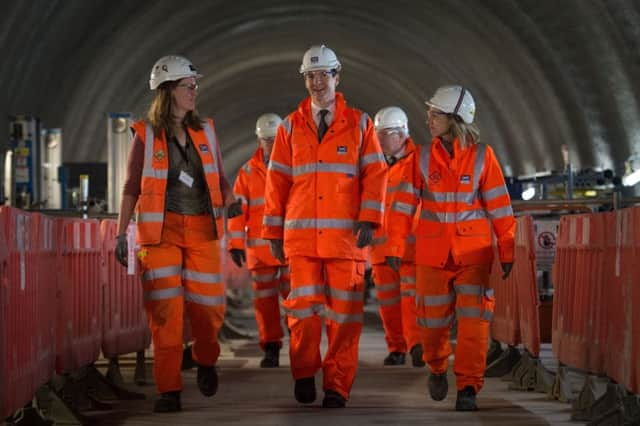Three ways George Osborne could create the first major cross-Pennine road since M62


But the engineering feat involved cannot be underestimated.
Spanning the Pennines has presented a transport challenge for centuries but cost, environmental impact and a sheer lack of ambition have been more of an obstacle than engineering know-how in recent decades.
Advertisement
Hide AdAdvertisement
Hide AdTwo hundred years ago the hills provided a grand test for great engineers who produced wonders of the industrial revolution like the three-mile-long Standedge canal tunnel and the Ribblehead Viaduct.
But the last major transport link to be built across the Pennines was the M62 motorway, completed in the early 1970s.
Since then, scheme after scheme has been little more than a tinkering with a road and rail infrastructure which, with the exception of the M62, was largely developed by the Victorians.
The road links between Sheffield and Manchester - 35 miles apart as the crow flies - provide a clear example of the issues.
There are currently three unsavoury choices.
Advertisement
Hide AdAdvertisement
Hide Ad• The 75-mile long motorway route involves taking the M1 the wrong way, almost to Leeds, before joining the overcrowded M62 over the Pennines.
• The other two routes - the Woodhead Pass and the Snake Pass - are more direct but take the would-be traveller on single track, winding routes across the high moorland, often closing in the winter due to wind or ice or accidents, or all three.
The M67 - dubbed “the motorway to nowhere” - exemplifies the frustration of the cross-Pennines motorist.
From the M60 Manchester ring road, the M67 heads confidently off towards the Pennine hills and Yorkshire beyond.
Advertisement
Hide AdAdvertisement
Hide AdBut, after just five miles, the motorway stops abruptly at a roundabout in Hyde. This is where a slow crawl of single-carriageway traffic heads towards the Woodhead Pass through Mottram, one of the worst pinch-points on the whole UK road network.
The original plan - half a century ago - was that the M67 would be the start of a trans-Pennine motorway linking Manchester with the M1 in South Yorkshire.
Now, this solution is not even mentioned, such is the inconceivability of driving a six-lane motorway through the Peak District National Park.
Instead, the new headline proposal is to tunnel under the Pennines.
Advertisement
Hide AdAdvertisement
Hide AdChancellor George Osborne is set to provide £75 million of funding to develop a plan to link Sheffield and Manchester underground.
When the Department for Transport announced it was exploring the feasibility of a major new road link between Sheffield and Manchester in December 2014, it said: “Such a connection could have a dramatic impact on the economy of the north, particularly in combination with plans for high speed rail links.
“It would be capable of fundamentally changing the nature of the journey between two of the most important cities of the north.
“But the invaluable landscapes and ecological significance of the Peak District National Park rule out a surface link. The only credible solution may be to construct a tunnel under the central part of the Pennines.”
Advertisement
Hide AdAdvertisement
Hide AdIt went on: “Such a project would be the most ambitious road scheme since the construction of the first motorways 50 years ago. The engineering and delivery of such a tunnel would be a national first.”
Last year, an interim report on such a tunnel outlined the general idea but with no details about routes or terminal locations.
Part of last November’s report said: “The tunnel is likely to be longer than most other road tunnels in Europe, and the psychological aspects of travelling through a tunnel of this length are broadly understood.
“However, it is appreciated that we will need to undertake further work to understand driver behaviour and to consider how advances in technology and appropriate tunnel design could help to mitigate this issue.”